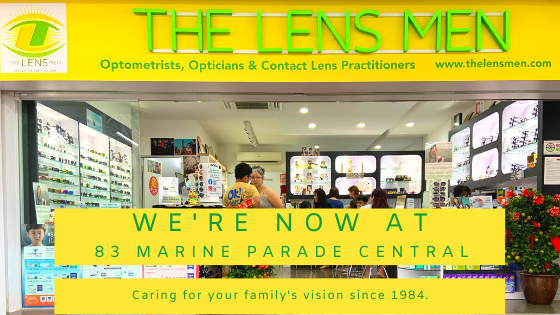Blue Light May Cost You Your Sight
What you may know about age-related macular degeneration (AMD):
A common eye condition that's the leading cause of vision loss for people age 50 and above. It's a disease that damages the macula, a small spot near the centre of your retina - the fragile tissue needed for central, sharp vision and for seeing objects straight ahead. Research has found that smoking and genetics are high contributing risk factors and now, there is a new focus on blue light and its correlation to AMD.
What is blue light?
Light enters our eyes in various wavelengths along the visible spectrum, containing many colours such as red, green and blue.
Where does blue light come from?
Blue light is everywhere! Sunlight emanates 25 to 30% of it, and the rest comes from items we interact with throughout the day such as TV and computer screens, digital devices (smartphone and tablet screens) and fluorescent LED lighting.
What happens when blue light meets your eyes?
The high frequency wavelength of blue light means it reaches deeper into our eyes, cumulatively damaging the retina over time as our eyes' melanin - natural filters - aren't enough protection against it. That eye strain, blurry vision, dry and irritated eyes and headaches you feel after working on your computer or smartphone for long stretches? That's Computer Vision Syndrome, which has now overtaken Carpal Tunnel Syndrome as the number one computer-related complaint. As we grow older, we lose melanin and usually by age 65, half the protection is gone, which leaves us even more vulnerable to AMD caused by blue light.
Some blue light is good!
Only certain wavelengths of blue light have detrimental effects on the eye - blue-turquoise light is essential for vision and pupillary reflexes. It's also beneficial to general body health and it helps regular our biological clock (circadian rhythm) which controls certain hormonal releases and our sleep cycle.
How do we protect our eyes from blue light?
Our easiest and most comfortable way blue light defense is to wear lenses with special coating that filters out these harmful wavelengths, preventing a great amount from reaching the eyes. The option to add on this anti-blue light coating is available for all ophthalmic lenses from good lens companies, such as Essilor's Crizal Prevencia coating or Hoya's BlueControl. Even if you do not need vision correction, plano (no prescription) lenses with anti-blue light coating can be dispensed by a licensed optician or optometrist with a frame of your choice or simply buy off-the-shelf frames with anti-blue light coating lenses.
Highlight your interest in such lenses to your eye health professional so they can further educate you on the product and may have a demo set for you to try. While the subject of the best protection for your eyes is on your mind, you may also consider getting UV protection coating on ophthalmic lenses, together with the anti-blue light coating.
Written by:
Dr. Dion Koh - Bachelor of Medicine/Bachelor of Surgery, Monash University; Diploma in Optometry, Singapore Polytechnic




